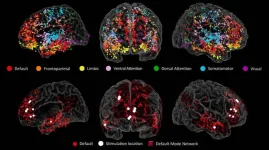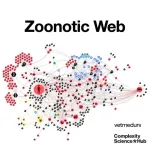(Press-News.org) It’s been long established that certain men become aggressive when they see their manhood as being threatened. When does this behavior emerge during development—and why? A new study by a team of psychology researchers shows that adolescent boys may also respond aggressively when they believe their masculinity is under threat—especially boys growing up in environments with rigid, stereotypical gender norms.
The findings, reported in the journal Developmental Science, underscore the effects of social pressure that many boys face to be stereotypically masculine.
“We know that not all men respond aggressively to manhood threats—in past work, we have found that it is primarily men whose stereotypical masculinity is socially pressured who are the most aggressive under such threats,” says Adam Stanaland, a postdoctoral researcher at New York University and the paper’s lead author. “Now we have evidence that certain adolescent boys respond similarly, pointing to the foundations of these potentially harmful processes.”
“Beyond just aggression, manhood threats are associated with a wide variety of negative, antisocial behaviors, such as sexism, homophobia, political bigotry, and even anti-environmentalism,” adds Stanaland. “Our findings call for actively challenging the restrictive norms and social pressure that boys face to be stereotypically masculine, particularly during puberty and coming from their parents and peers.”
Studies have long shown that perceived threats to men’s “gender typicality”—the alignment of appearance and behaviors with societal expectations for women and men—can cause them to engage in harmful behaviors intended to reassert their typicality. The researchers in the new study sought to understand the development of this phenomenon and the social environments in which it occurs.
Stanaland, as a Duke University doctoral student, led this experiment, which included more than 200 adolescent boys in the US and one of their parents. Boys first reported on the extent to which their motivation to be masculine was internally motivated or instead driven by a desire to gain other people’s approval or avoid their disapproval. The boys then played a game in which they answered five questions stereotypical of masculinity (e.g., “Which of these tools is a Phillips-head screwdriver?”) and five questions stereotypical of femininity (e.g., “Which of these flowers is a poppy fairy?”). At random, they were told that their score was either atypical of their gender (i.e., more like girls and a “threat” to their masculinity) or typical of their gender (i.e., more like other boys and nonthreatening).
To measure aggression, the study’s authors then asked the study’s participants to partake in a cognitive task: completing a series of word stems (e.g., “GU_”) that could be completed either aggressively (e.g., “GUN”) or not (e.g., “GUY” or “GUT”). In this commonly used task, the key indicator is the proportion of aggressive word completions.
The study also took into account demographic and other variables. In an effort to pinpoint the life stage in which gender typicality could have an effect on aggression, the boys, with parental approval, responded to questions on the Pubertal Development Scale, a standard and validated measure of puberty. They answered questions pertaining to changes in their voice and facial-hair growth, among others, rated on the following scale: 1=not yet started, 2=barely started, 3=definitely started, or 4=seems complete. Given the sensitivity of this scale, participants were allowed to select “I don’t know” or “Prefer not to say” to any item.
Finally, the researchers considered environmental sources that might pressure the boys to be motivated to be gender-typical, including the pressure they said they felt from peers, parents, and themselves. They also asked the participating parents about their beliefs relating to gender.
The questions and data may be found on the Center for Open Science website.
The experimental results showed the following:
Similar to young adult men, adolescent boys in mid-to-late puberty (but not before) responded with aggression to perceived threats to their gender typicality.
Aggression was heightened among boys whose motivation to be gender typical was due to pressure from others (i.e., driven by social expectations) rather than from within themselves.
The boys most likely to reveal this “pressured motivation” were those whose parents endorsed stereotypical beliefs about men’s status and power (e.g., that men should have more power than people of other genders).
“Men’s aggression presents challenges for societies across the world, ranging from public safety to intimate personal relationships,” observes Andrei Cimpian, a professor in NYU’s Department of Psychology and the paper’s senior author. “By identifying when and why certain boys begin showing aggressive responses to masculinity threats, this research is a first step in preventing the development of ‘fragile’ masculinities—masculinities that need to be constantly proved and reasserted—and their many negative consequences among adult men.”
The paper’s other authors included Sarah Gaither and Anna Gassman-Pines, professors at Duke University, and Daniela Galvez-Cepeda, a research assistant in Cimpian’s Cognitive Development Lab and a recent Williams College graduate.
The research was funded, in part, by the Charles Lafitte Foundation.
# # #
END
When certain boys feel their masculinity is threatened, aggression ensues
New study points to impact of pressure during puberty to be stereotypically masculine
2024-07-15
ELSE PRESS RELEASES FROM THIS DATE:
Safe, successful pregnancies possible after alloHCT
2024-07-15
Findings refute former consensus that pregnancies post-transplant are nearly impossible, highlight need for increased fertility counseling
(WASHINGTON, July 15, 2024) — Despite treatment-related fertility challenges, female patients can become pregnant and give birth to healthy children after undergoing allogeneic hematopoietic cell transplantation (alloHCT), according to a study published in Blood.
During alloHCT, stem cells from a healthy donor are transplanted to individuals with hematologic cancers or benign hematologic disorders such as leukemia and sickle cell disease. Procedural improvements in the administration of alloHCT ...
Santiago Núñez-Corrales on ‘NCSA’s Mission in Quantum Computing’
2024-07-15
Editor’s note: This is part of a series of virtual essays from NCSA experts on current topics impacting the field of high-performance computing and research.
NCSA’s Mission in Quantum Computing
By Santiago Núñez-Corrales, NCSA Quantum Lead Research Scientist
The fact that physical laws in our universe contain the recipe to perform computation is nothing short of extraordinary. John Archibald Wheeler described how intricate and intense the relationship is between physics and information in his foundational paper in 1991, one that bears profound consequences ...
Study pinpoints origins of creativity in the brain
2024-07-15
Have you ever had the solution for a tough problem suddenly hit you when you’re thinking about something entirely different? Creative thought is a hallmark of humanity, but it’s an ephemeral, almost paradoxical ability, striking unexpectedly when it’s not sought out.
And the neurological source of creativity—what’s going on in our brains when we think outside the box—is similarly elusive.
But now, a research team led by a University of Utah Health researcher and based in Baylor College of Medicine has used a precise method of brain imaging to unveil how different parts of the brain ...
Breakthrough wildlife tracking technology that adheres to fur delivers promising results from trials on wild polar bears
2024-07-15
TORONTO, July 15, 2024 – Studying polar bears just became a lot easier with new “burr on fur” trackers which confirmed scientists’ belief that subadult and adult males spend most of their time on land lazing around, conserving energy until the ice returns.
A multi-institutional research team led by York University and including the University of Alberta, Environment and Climate Change Canada, Manitoba Sustainable Development, Ontario Ministry of Natural Resources and Forestry, and Polar Bears International, used three ...
Study unveils complexity of zoonotic transmission chains
2024-07-15
[Vienna, July 11 2024] — Researchers from the Complexity Science Hub and the University of Veterinary Medicine Vienna have dissected the complex interactions involved in zoonoses, which affect worldwide over two billion people annually. They introduce the concept of a "zoonotic web," a detailed network representation of the relationships between zoonotic agents, their hosts, vectors, food sources, and the environment.
"Zoonotic diseases, which can be transmitted between animals and humans, are a significant public health concern, and our study highlights the importance of a holistic approach to understanding and managing these ...
30-year risk of cardiovascular disease may help inform blood pressure treatment decisions
2024-07-15
Research Highlights:
A comparison of two tools for calculating cardiovascular disease risk found that if only the current 10-year risk thresholds are applied, fewer adults may be recommended for blood pressure-lowering medication. The tools, The American Heart Association’s new PREVENTTM tool and the Pooled Cohort Equations, were applied to a cross-sectional sample of adults from NHANES datasets with stage 1 hypertension who did not report having CVD.
PREVENT can additionally be used to calculate an individual’s 30-year risk ...
Off-the-shelf wearable trackers provide clinically-useful information for patients with heart disease
2024-07-15
Monitoring of heart rate and physical activity using consumer wearable devices was found to have clinical value for comparing the response to two treatments for atrial fibrillation and heart failure.
The study published in Nature Medicine examined if a commercially-available fitness tracker and smartphone could continuously monitor the response to medications, and provide clinical information similar to in-person hospital assessment.
The wearable devices, consisting of a wrist band and connected smartphone, collected a vast amount of data on the response to two different medications prescribed ...
Visualizing addiction: How new research could change the way we fight the opioid epidemic
2024-07-15
New research from a Max Planck Florida Institute for Neuroscience researcher could transform how we understand the way opioids affect the brain. Despite significant discussion surrounding the ongoing opioid crisis, current understanding of how opioids function in the brain is quite limited. This is primarily due to challenges in observing and measuring opioid effects in the brain in real-time. However, a recent technological breakthrough, led by Dr. Lin Tian and her research team and collaborators, recently published in Nature Neuroscience, has overcome these limitations and is set to transform how scientists study opioid signaling ...
Caught in the actinium
2024-07-15
The element actinium was first discovered at the turn of the 20th century, but even now, nearly 125 years later, researchers still don’t have a good grasp on the metal’s chemistry. That’s because actinium is only available in extremely small amounts and working with the radioactive material requires special facilities. But to improve emerging cancer treatments using actinium, researchers will need to better understand how the element binds with other molecules.
In a new study led by the Department of Energy’s Lawrence Berkeley National Laboratory (Berkeley Lab), ...
Out-of-pocket medical costs are substantial and rising for privately insured men with abnormal prostate cancer screening results who require further diagnostic testing
2024-07-15
Prostate-specific antigen (PSA) screening aims to identify men who may harbor potentially lethal prostate cancer, and those with high PSA results often require more extensive (and expensive) diagnostic testing to establish a diagnosis. New research reveals that the out-of-pocket costs for such additional tests are substantial, common, and rising. The findings are published by Wiley online in CANCER, a peer-reviewed journal of the American Cancer Society.
Abnormal screening tests (i.e., elevated PSA) warrant ...
LAST 30 PRESS RELEASES:
Numbers in our sights affect how we perceive space
SIMJ announces global collaborative book project in commemoration of its 75th anniversary
Air pollution exposure and birth weight
Obstructive sleep apnea risk and mental health conditions among older adults
How talking slows eye movements behind the wheel
The Ceramic Society of Japan’s Oxoate Ceramics Research Association launches new international book project
Heart-brain connection: international study reveals the role of the vagus nerve in keeping the heart young
Researchers identify Rb1 as a predictive biomarker for a new therapeutic strategy in some breast cancers
Survey reveals ethical gaps slowing AI adoption in pediatric surgery
Stimulant ADHD medications work differently than thought
AI overestimates how smart people are, according to HSE economists
HSE researchers create genome-wide map of quadruplexes
Scientists boost cell "powerhouses" to burn more calories
Automatic label checking: The missing step in making reliable medical AI
Low daily alcohol intake linked to 50% heightened mouth cancer risk in India
American Meteorological Society announces Rick Spinrad as 2026 President-Elect
Biomass-based carbon capture spotlighted in newly released global climate webinar recording
Illuminating invisible nano pollutants: advanced bioimaging tracks the full journey of emerging nanoscale contaminants in living systems
How does age affect recovery from spinal cord injury?
Novel AI tool offers prognosis for patients with head and neck cancer
Fathers’ microplastic exposure tied to their children’s metabolic problems
Research validates laboratory model for studying high-grade serous ovarian cancer
SIR 2026 delivers transformative breakthroughs in minimally invasive medicine to improve patient care
Stem Cell Reports most downloaded papers of 2025 highlight the breadth and impact of stem cell research
Oxford-led study estimates NHS spends around 3% of its primary and secondary care budget on the health impacts of heat and cold in England
A researcher’s long quest leads to a smart composite breakthrough
Urban wild bees act as “microbial sensors” of city health.
New study finds where you live affects recovery after a hip fracture
Forecasting the impact of fully automated vehicle adoption on US road traffic injuries
Alcohol-related hospitalizations from 2016 to 2022
[Press-News.org] When certain boys feel their masculinity is threatened, aggression ensuesNew study points to impact of pressure during puberty to be stereotypically masculine



